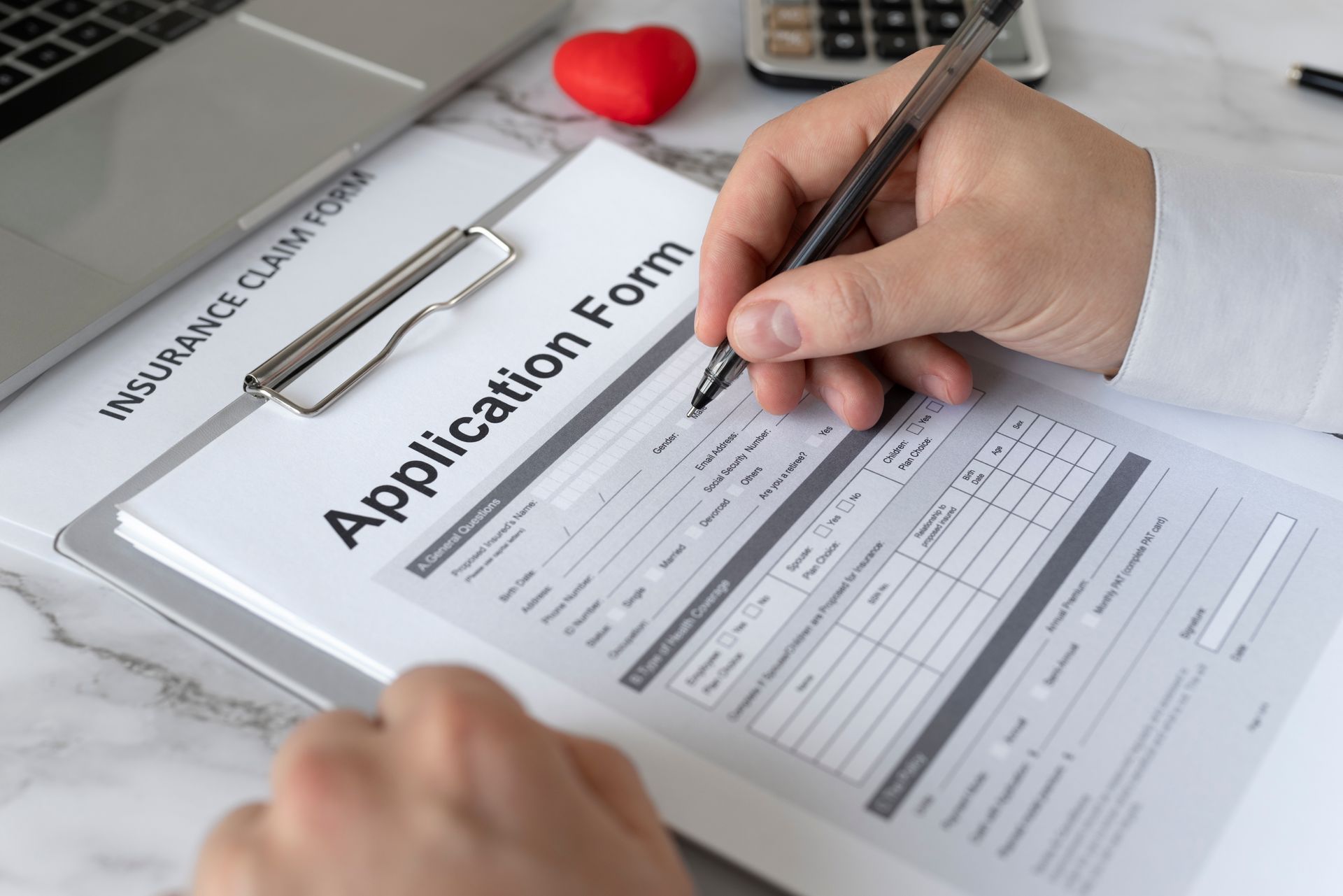Activating Your IEC Working Holiday Visa: An Arrival Guide for Canada

First of all, congratulations on your approval! An International Experience Canada IEC visa is a wonderful way to live and work in Canada. This guide will help you smoothly navigate the final steps of your IEC Canada journey.
Being able to work in Canada through an IEC Canada Working Holiday Visa unfolds in stages, and each stage involves various steps. You’ve been through many of these already during the application process. First, as an eligible candidate, you had to enter your profile in the Canada International Experience pool, meet the requirements set out by the Canadian government and receive an invitation to apply for the open work permit. That was the first exciting stage – to receive an invitation from the IEC visa pool, especially with the caps for each country! Next, you had to compile your required documents, submit the application, pay the appropriate fee and wait anxiously for a couple of months for the decision. Processing times of the work permit application can vary, but many applicants receive a decision within eight weeks. Finally, a positive decision arrived!
Now you are at the most crucial stage of your working holiday visa experience – booking your flight. It is important to understand the arrival rules for your Canada working holiday visa to ensure the process goes smoothly.
In this article we discuss what happens at the Canadian border and how IEC participants can best prepare for a successful entry.
What is the International Experience Canada (IEC) Program?
Canada’s Working Holiday Visa program is one of the broader International Experience Canada (IEC) categories, which operates through bilateral youth mobility agreements between Canada and more than 30 participating countries. These agreements allow young foreign workers to live and work in Canada for a temporary period, usually up to 12 or 24 months depending on your home country.
Many participating countries in the IEC program offer the Canada Working Holiday visa stream, while most countries also offer the Young Professionals or International Co-op (Internship) categories, depending on their bilateral agreement with Canada.
The Working Holiday category is just one stream under these agreements, designed to promote cultural exchange and help young adults gain international experience. The exact terms and eligibility can vary by country, including the number of spots available each year and the types of IEC categories.
IEC visa pools can fill up quickly, and spots are limited based on your nationality. If you're interested in a particular category, it’s best to apply early to improve your chances of receiving an invitation to apply.
Other IEC categories include the Young Professionals and International Co-op (Internship) streams, each with their own IEC visa pools. We’ll cover these other IEC categories in more detail in a future article.
Preparing for Your Arrival in Canada
Your Port of Entry (POE) Letter for your work holiday visa is typically valid for 12 months, meaning you must enter Canada and activate your permit within that time frame. The approval letter is sometimes called the Letter of Introduction or the Port of Entry letter. This letter should also confirm that your eTA (electronic Travel Authorization) has been issued. Most IEC applicants will need an eTA to board a plane to Canada, and the eTA should have been automatically approved when the IEC was approved. (Note, however, that your eTA is linked to your passport, so you need to travel to the country with the same passport you used to apply for the working holiday).
Keep in mind that your eligibility can be reassessed at the port of entry, so bring all required documents that demonstrate you meet the IEC eligibility criteria.
If, for some reason, you decide not to travel to Canada before your port of entry letter expires, then you will need to enter the IEC pool again and go through the entire work permit application process in order to get a new Port of Entry letter. Letting your POE letter expire without activating your work permit does not count as a participation in terms of the number of times you can obtain an IEC work permit.
Your Port of Entry Document Checklist for the IEC Work Permit
Although your documents were already examined during the work permit application by the Immigration and Citizenship Canada visa officer before you were approved, the border officer has the right to examine them again to make sure you keep meeting the eligibility criteria. Remember, it is the border officer’s decision to issue the final permit, so you want to have these documents ready for examination and present evidence of your eligibility as the officer may request.
Of course, a valid IEC approval letter is the most essential document to present to the officer. Your valid passport is also necessary and must be valid for the whole period of your intended stay.
Some other documents are also needed to ensure the process goes smoothly. Make sure you bring the following documents with you, preferably as paper copies instead of electronic form:
Application Documents & Police Certificates
You should bring copies of any documents you used to obtain the IEC approval such as proof of residency, your resume and any police certificates. In fact, for any documents that you ordered especially for the IEC process (e.g. a police certificate), you can bring the original. For other documents a paper copy is fine. Bring your paper copies in your carry-on bag rather than your checked luggage.
Some border officers may ask for additional documents, especially if there are any inconsistencies or missing details in your application. It’s always a good idea to bring both printed and electronic versions of everything you submitted.
Proof of Health Insurance
You will need proof of health insurance coverage for the entire length of your stay in the country. This may be a travel insurance policy that includes comprehensive medical coverage. If your insurance is for a shorter period, your working holiday visa will only be issued for that shorter time. In this situation, you will not be able to obtain any extension.
Some applicants assume they can extend their work permit in Canada once they buy another year of insurance. But this is not the case. IEC permits are not supposed to be extended if the reason they were issued for a shorter duration was because the medical insurance was not valid for the entire stay. This is the official policy of IRCC (immigration, Refugees and Citizenship Canada), and we don’t recommend that you take any chances. Buy the proper medical insurance! If an insurance company will not issue a two-year health insurance policy, then contact other insurers or try to purchase two consecutive one-year policies.
I do want to mention that we have seen cases where clients’ IEC permits were extended inside the country by providing additional medical insurance. Therefore, it is definitely worth applying for an extension if you find yourself in this situation. But you need to understand that it is considered a pleasant surprise to get an extended period in this situation, it is not your right to do so.
Immigration Medical Exam Results (If Applicable)
An open work permit generally allows you to work for a Canadian employer in any location or workplace in the country, including seasonal work, as opposed to an employer specific work permit.
However, even with an open permit, there is an exception for work in the fields of agriculture, health care and education, including day care and live-in care giving – where you must first pass a medical exam to protect the health of Canadians. If you plan to work in these fields, it is important to take the immigration medical exam in advance through a panel physician in your own country and bring the e-medical paper with you to present to the border officer. This enables the officer to issue a permit that allows you to work in any field, without restriction. Otherwise, your working holiday permit will not allow you to work in healthcare, education, or agriculture. It is possible to change the permit by getting a medical exam in Canada, but this will cause significant delays (months) before you can start to work.
Proof of Funds ($2,500 CAD)
The border officer will ask you for proof of funds to cover initial expenses in the country, so you should be prepared to prove your financial resources.
A key requirement for the working holiday visa Canada is providing proof of funds at the border. You must be prepared to present a bank statement (issued within 7 days of travel) showing you have at least the equivalent of $2,500 CAD. If you are printing your bank statement from online, ensure it clearly shows your name and the effective date of the statement.
Be careful about travelling with an excess of funds, as anyone who arrives in the country with the equivalent of CAD $10,000 or more must declare this to a border officer. It may be in the form of cash, travelers cheques or any other liquid assets travelling with you in physical format. The failure to declare it is a serious offence and CBSA will take away all of your money.
Proof of Onward Travel or Sufficient Funds
If you plan to be in the country for the whole duration of your working holiday permit, a departure ticket may not be practical; therefore, you do not need to purchase a round trip ticket upfront. However, the border officer needs to be satisfied you have sufficient funds to return home after your authorized stay. There are two ways to prove this. First, you can prove you have the funds in your bank account over and above CAD $2500 for a one-way ticket home; or, if you know you will be making a trip home (or to some other country) during your Canadian stay, you can purchase that ticket before your arrival and present it as proof of the ability to leave the country.
Getting Your IEC Work Permit at the Airport
Your approval letter authorizes you to travel and request your permit. Remember, the letter itself is not your IEC work permit – that official document is only issued by a border officer upon your arrival. Nor does the letter guarantee a work permit will be issued.
The border officer alone decides whether to issue the working holiday permit, after being satisfied that you meet the requirements from your country of nationality and you are admissible. Once they are satisfied, they will print out the work permit for you.
The immigration process takes places at the first Canadian port of entry you enter Canada. If you are not flying directly to your final destination, it is important to ensure you have enough time between connecting flights to get your permit. Three hours is recommended. The process itself will only take a few minutes, but anything can happen – for example, there might be a long line-up that day!
When you enter Canada, tell the border officer you are seeking a working holiday permit and they will refer you to a side office to examine your documents and confirm things in their computer system. If all is in order, the officer will print out your open work permit then. Your authorization to work will start that day and will be valid for two years (unless your country has a different time frame for working holiday visas).
Note that flagpoling to obtain an IEC work permit is no longer permitted. Only US citizens can activate their IEC work permits at either a Canada / US land border, or by flying into Canada from the US. If you are not a US citizen, then you must fly into Canada from a different location (not the US) in order to have your work permit printed. If you were already inside of Canada with a valid IEC work permit at the time you applied for a new IEC working holiday visa, then you can also ask IRCC to print your IEC work permit and mail it to you at your Canadian address.
Important: Check Your Work Permit for Errors
Ensure you check your working holiday permit carefully before finishing with the border services agent. You are checking to confirm everything is correct – the spelling of your name, your birth date, the start and end dates of your work authorization. Human error is possible, and getting the work permit changed at a later date is very difficult. For example, we have unfortunately seen cases where a work permit was issued with the end date of the work permit the same as the start date. This person is not authorized to work until they get it changed – and that can take a lot of time and effort.
If you believe there may be a mistake on your permit, be sure to tell the officer right away so that it can be corrected before you leave the office.
How to Get Your Social Insurance Number (SIN)
Once you have your work permit, you will need to apply for a Social Insurance Number (SIN) which is required for all workers in the country. It is free to obtain. Every employer will ask you for this number so they can make the proper deductions for tax purposes. There is now a desk for SIN applications at Pearson International Airport in Toronto, so if you obtain your work permit there, you can likely get your SIN at the same time. Otherwise, you can visit the nearest Service Canada office to apply in person, and a number will be issued to you immediately.
You can also apply for a SIN online but it takes up to 20 days to receive it when you apply online. You are allowed to start work in the country without your SIN, but you will not get paid until you can provide it.
Every employer will ask you for this number so they can make the proper deductions for tax purposes. Your SIN is often linked to your employment number in company records and is used to track your income and contributions to the Canada Revenue Agency.
Activating Your IEC Permit from Inside Canada (Flagpoling)
Some IEC applicants apply and get approved when they are already in the country with some other immigration status. If you are inland with lawful immigration status when your IEC work permit is approved, you can no longer attend at a land border to have your work permit issued. Flagpoling became a prohibited practice in Dec 2024.
There are a couple of other options for you to obtain your new IEC work permit.
1) You can fly out to a country that is not the United States, then return to Canada and get your new working holiday visa printed at the airport upon your return, OR
2) If you were inside of Canada with a valid IEC permit when you applied for the new one, then you can ask IRCC to print your new IEC permit and mail it to your Canadian address.
Even if you’re already in Canada, you must still meet the eligibility criteria for the IEC stream you're applying under before asking for your permit to be printed and mailed.
Leaving Canada on an IEC Work Permit
You might notice that your permit says: “This does not authorize re-entry”. Every permit states this. This phrase does not prevent you from leaving the country and returning during the period of your permit. It simply means the permit itself is not a guarantee of re-entry, as a border officer will still examine you and decide if Canada wants to let you in. For example, if you are found with illegal drugs on your person or you arrive with only 1 day left on your permit, you will likely not be permitted to re-enter even though you have a valid permit. But under normal circumstances, where your permit still has time left and there is no other reason to refuse you, you would most likely be allowed to return to complete your work period.
IEC Next Steps: Young Professionals & International Co-op (Internship) Visas
While most people are familiar with the Working Holiday Visa, it’s just one of several IEC categories under the International Experience Canada program. Depending on your nationality, you may be eligible for another IEC category even after completing a Working Holiday. These are employer specific work permits. For example, as a French passport holder, you may participate in the Working Holiday only once. If you meet the eligibility criteria, you may participate in IEC one more time through the young professionals category or the International Co-op (Internship) category. In some cases, you may even be able to participate in an additional IEC category through a recognized organization that facilitates cultural exchange and employment opportunities.
For young professionals looking to continue their journey after a working holiday, the Young Professionals visa Canada is a popular option. This IEC category requires a Canadian job offer related to your professional experience. This can be a great way to gain international work experience and build your work experience. The Young Professionals stream has more specific eligibility criteria, such as requiring a job offer related to your field of study or career goals. Unlike other work permits, an LMIA is not required—only a signed job offer letter is needed. The employer will need to register the job offer through the employer portal and pay the employer compliance fee. This is separate from the processing fees of the IEC work permit application. Then the young professional can apply for the IEC permit.
Another option is the International Co-op (Internship) stream, available to registered students in a post-secondary institution in their home country. This allows for an international co-op work placement or internship related to their studies in Canada.
Each IEC category has its own set of eligibility criteria, which are based on your country of citizenship, age, and type of work or study experience. If you are a young professional or a student that meets the eligibility criteria for another IEC stream, such as the Young Professionals or International Co-op (Internship) category, you may be able to extend your stay in Canada through a new permit.
Eligibility Requirements to Extend Your Stay
To qualify for any of these IEC categories, you must meet the specific eligibility criteria set out for the applicant's country. These eligibility criteria may include age limits (typically 18–30 or 18–35), financial support, health insurance, and more.
If you're no longer eligible under IEC, don’t worry—there are many other immigration pathways to consider. Depending on your goals, you might explore other types of work permits, study permits, or even permanent residence options. A professional immigration adviser can help you assess your eligibility and guide you through the next steps.
From IEC to PR: Your Pathway to Permanent Residence
You will probably find that time passes very quickly when you are in Canada on your working holiday! Many foreign youth like to keep open the possibility of staying beyond their working holiday time and possibly even apply for permanent residence, especially after finding their dream jobs here. If this is you, it is best to meet with an immigration professional early in the process, even before you start looking for a job. Indeed, it possible to have an online consultation even before you come to Canada. This is because the Canadian province where you settle, and the type of job you accept, can both be very relevant to qualifying for Permanent Residence in the future. Your open work permit gives you almost unlimited options with Canadian employers, but the decisions you make during your first few days in the country can make a huge difference in being able to stay or having to leave once your initial working holiday period is finished. Our best advice is – plan ahead!
At The Way Immigration, our team is an expert resource for all IEC immigration pathways. We have helped hundreds of applicants secure their IEC visa Canada and can guide you on your journey to temporary or permanent residence. We would be pleased to help you with your IEC application to ensure you can maximize this unique opportunity to achieve your long term Alberta immigration goals. We can also explore other temporary and permanent options if IEC is not feasible for you. Contact one of our professionals for a consultation today!











